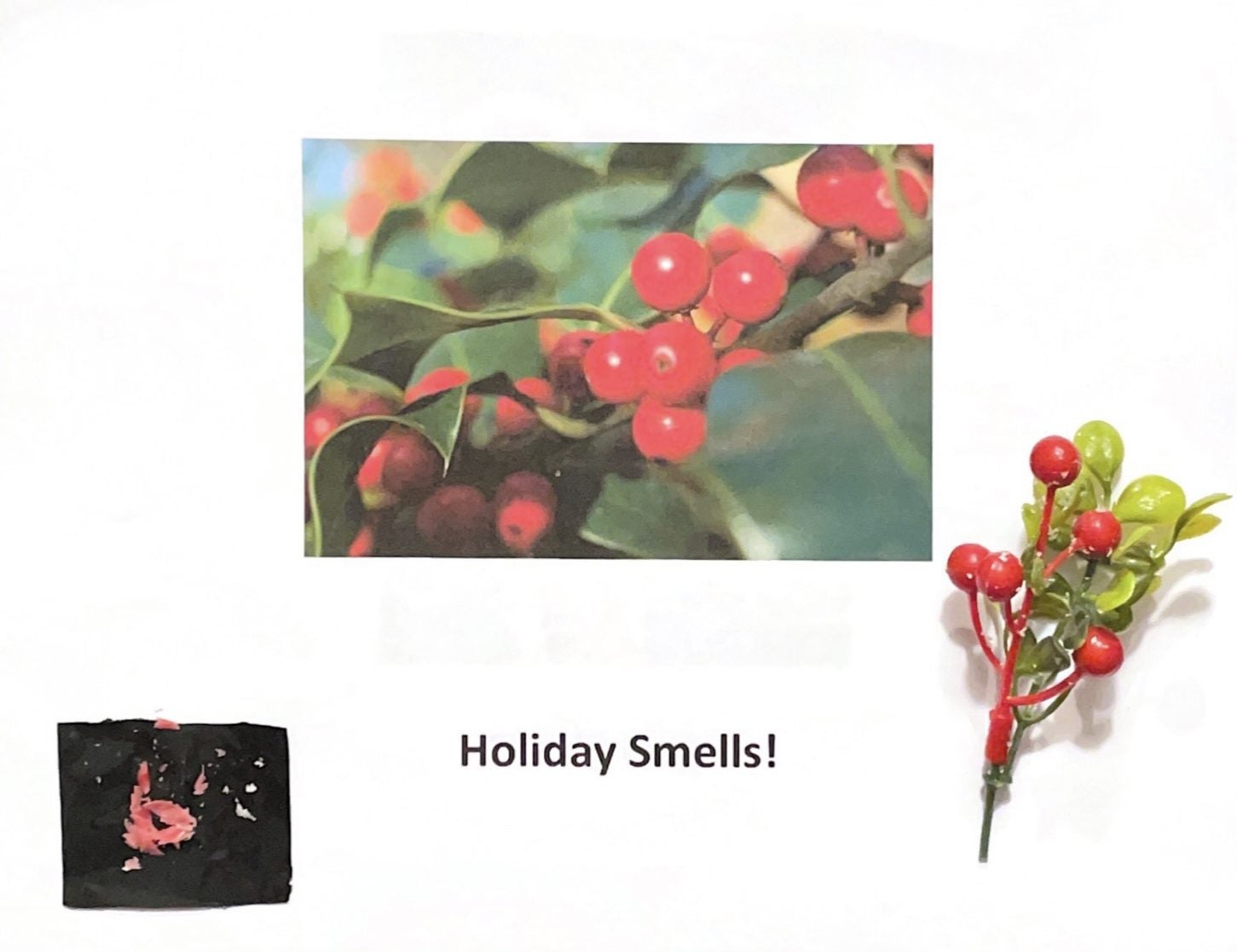When it comes to this most wonderful time of the year, there are lots of great smells associated with the season. Just think of the smells of a freshly cut tree, apple cider, pies, cakes, gingerbread, hot cocoa, oranges, and so on. These smells can bring us back to wonderful memories of holidays past. This season is certainly a great time to create sensory smell books!
When it comes to sensory books, we tend to think of addressing the tactile senses but how about addressing the olfactory senses? Smells can be very reinforcing in positive and negative ways. There are smells we like and those we don’t prefer. There’s a lot of conversation to be addressed about those preferences. Creating sensory books to address these details can increase communication and literacy opportunities for learners with deafblindness.
It’s fun and easy to create these books on your own. Not only can you create books on paper but you can also create them online to share with others! The Center for Literacy and Disabilities has developed Tarheel Reader. This great resource provides stories created by individuals and classrooms all over the world about a wide range of topics. If you sign up for an account, you can create your own books to use with your students and share with others all over the world. The stories can be printed out to use for creating tactile and scented books.
We have created a book about holiday smells within Tarheel Reader. You can use the following steps to create a book of your own using the story on the site:
- Find the story on Tarheel Reader using the following link: Holiday Smells!
- Follow directions in Tarheel Reader to download and print a copy of the story on cardstock.
- Determine appropriate items to use for the tactile objects and attach them to each page in a consistent location. See the picture examples below.
- Determine the appropriate smells to go with each page. On the picture examples shown below, scented wax melt shavings from the related scents were used.
- Place the wax melt shavings on a consistent side of each page to allow the learner to know where to find the smell on each page. On the pages of the example book below, wax shavings were placed on a black square to guide the learner where to find the smells.
________________________________________________________________________________________
Title Page:
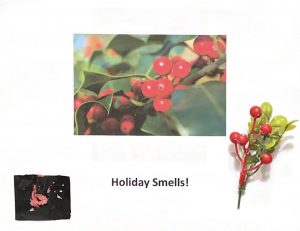
_________________________________________________________________________________________
Page 1:
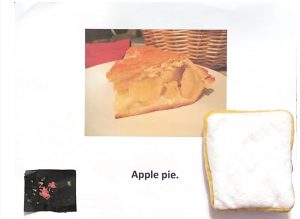
________________________________________________________________________________________
Page 2:
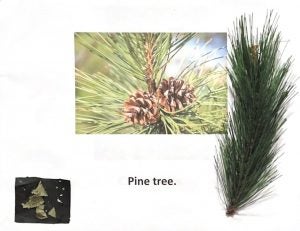
_________________________________________________________________________________________
Page 3:
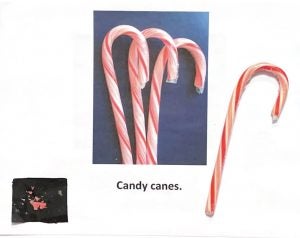
_________________________________________________________________________________________
Page 4:
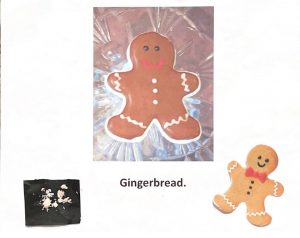
_________________________________________________________________________________________
Page 5:

___________________________________________________________________________________________
Page 6:
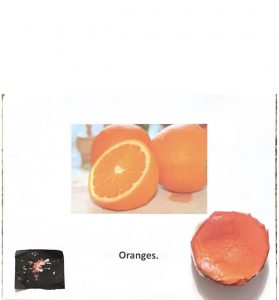
The possibilities are endless with creating scented books. The sense of smell can bring us back to memories of events and create lots of opportunities for communication. Make activities meaningful for learners with deafblindness through celebrating with smells of the season!
If you’ve made scented stories, we would love for you to share your examples below!
Julie Brickhouse, M.Ed.,NBCT, East Carolina University DeafBlind Project Teacher Support Program, Technical Assistance Consultant

